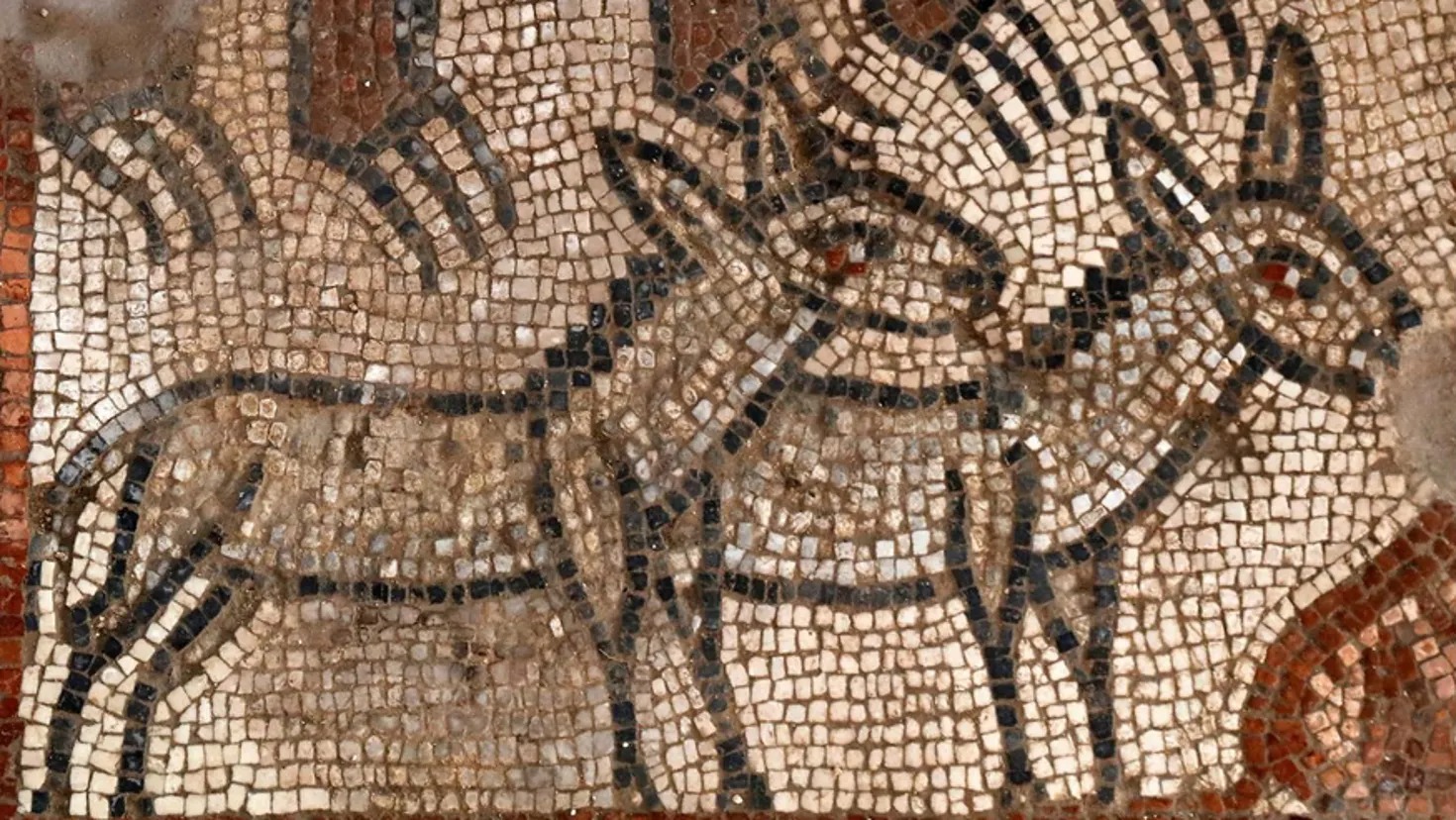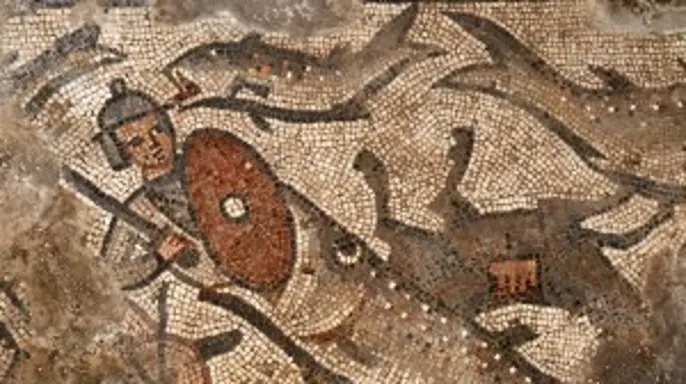
Experts have unearthed stunning mosaics depicting Noah’s Ark and the parting of the Red Sea during the excavation of an ancient synagogue in northern Israel.
The mosaics were found on the nave floor of the synagogue in Huqoq that dates back to the fifth century when the area was part of the Roman Empire. In addition to the ark, pairs of animals that include elephants, leopards, donkeys, snakes, bears, lions, ostriches, camels, sheep and goats are depicted. The vivid depiction of the Red Sea’s parting shows Pharoah’s soldiers being swallowed by a large fish, surrounded by overturned chariots with horses and chariot drivers.
Archaeologists working on the Huqoq Excavation Project, which involves the University of North Carolina at Chapel Hill, Baylor University, Brigham Young University and the University of Toronto, discovered the mosaics last month.
“There are many ancient synagogues from the late Roman Period that do have mosaic floors and sometimes even figured scenes like Biblical stories but there are no other ancient synagogues with the kind of content that we have depicted in our Huqoq synagogue,” Excavation Director and University of North Carolina at Chapel Hill Professor Jodi Magness told FoxNews.com. “The scenes of Noah’s Ark and the parting of the Red Sea are very, very rare.”

The parting of the Red Sea Mosaic (credit: Jim Haberman).
“The quality of our mosaics is very high – that’s also significant,” she added.
The Huqoq site, which is closed to the public, offers a fascinating glimpse into the life of an ancient Jewish village in Israel’s lower Galilee.
Noah’s Ark mosaics have been found at ancient synagogues in Jerash, Jordan, and Mopsuestia, Turkey, while the Red Sea parting has been depicted at Khirbet Wadi Hamam in Israel and Dura Europos in Syria. However, the high level of craftsmanship in the Huqoq mosaics is particularly notable.
“We see here evidence of a very prosperous village with lots of wealth and the ability to pay for a very beautiful mosaic and a very large building,” Magness told FoxNews.com. “There’s a very widespread view that Jewish communities suffered and declined when Christianity became the official religion of the Roman Empire in the fourth century – this runs counter to that view.”
The mosaics have been removed from the site for conservation, and the excavated areas have been backfilled, according to statements released by the University of North Carolina and Baylor University. Further excavations at the site will continue next summer.
Excavations at Huqoq began in 2011, and the first mosaic was discovered the following year. Notable mosaics unearthed at the site include Samson carrying the gate of Gaza on his shoulders, which was discovered in 2013. The first non-biblical story ever found decorating an ancient synagogue, which may show the legendary meeting between Alexander the Great and the Jewish high priests, was excavated in 2013 and 2014.
Other artifacts discovered at Huqoq include pottery and coins. “The coins, alongside the ceramics provide crucial information on the occupation of the monumental synagogue and associated village, and greatly inform the debate regarding the chronologies of synagogues like these in this region,” explained Nathan Elkins, assistant professor of art history at Baylor University and the project’s coin specialist, in an email to FoxNews.com. “Our coin finds have spanned approximately 2,300 years attesting to the long and varied history of the village.”

Leave a Reply